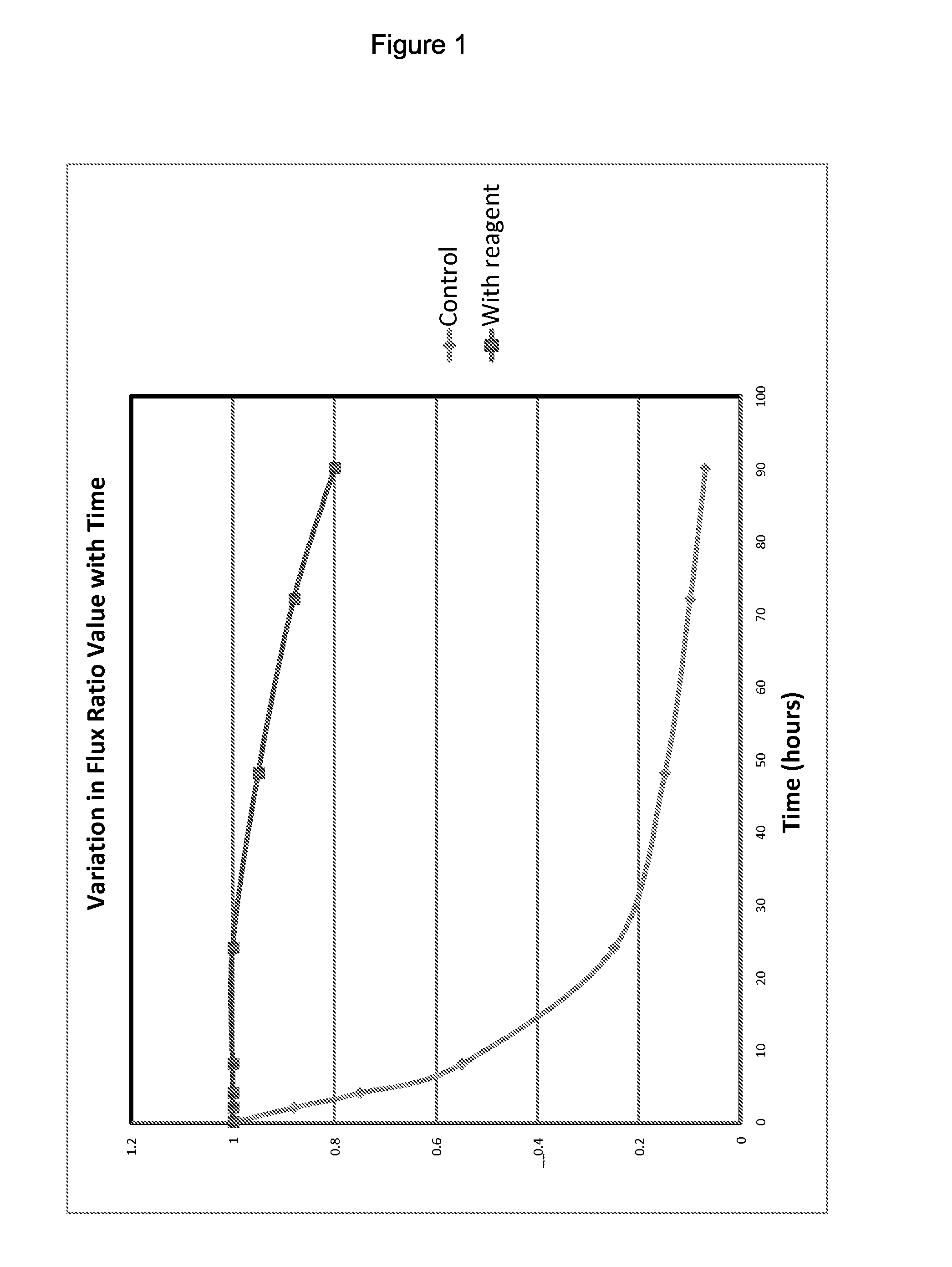Synergistic silica scale control
a technology of silica scale and control technology, applied in the direction of water treatment parameter control, water treatment compounds, membrane technology, etc., can solve the problems of amorphous silica scale, difficult and costly removal of silica scale once it is formed, and accumulation of silica scale on the internal surface of water treatment equipment,
- Summary
- Abstract
- Description
- Claims
- Application Information
AI Technical Summary
Benefits of technology
Problems solved by technology
Method used
Image
Examples
example 1
[0057]Combination 1 was a 50:50 combination of phosphinocarboxylic acid polymer, with weight average molecular weight of 4500 g / mol, and tetrasodium ethylene diaminetetraacetic acid.
example 2
[0058]Combination 2 was a 50:50 combination of a polymerization product of acrylic acid and maleic acid, terminated with phosphono end group and having weight average molecular weight of 2000 g / mol, and tetrasodium ethylene diaminetetraacetic acid.
[0059]Two other comparative blends were tested, which did not show synergistic performance, were as follows—
PUM
| Property | Measurement | Unit |
|---|---|---|
| temperature | aaaaa | aaaaa |
| temperature | aaaaa | aaaaa |
| weight | aaaaa | aaaaa |
Abstract
Description
Claims
Application Information
 Login to View More
Login to View More - R&D
- Intellectual Property
- Life Sciences
- Materials
- Tech Scout
- Unparalleled Data Quality
- Higher Quality Content
- 60% Fewer Hallucinations
Browse by: Latest US Patents, China's latest patents, Technical Efficacy Thesaurus, Application Domain, Technology Topic, Popular Technical Reports.
© 2025 PatSnap. All rights reserved.Legal|Privacy policy|Modern Slavery Act Transparency Statement|Sitemap|About US| Contact US: help@patsnap.com

